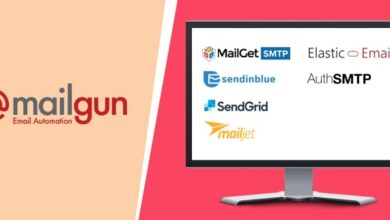How to Use Technology in the Classroom to Maximize Learning

In the rapidly evolving education landscape heavily influenced by technology, educators must harness the potential of digital tools to craft captivating and efficient learning encounters for their students. The infusion of technology into the classroom can potentially elevate the quality of teaching and learning, rendering the educational process more interactive and dynamic. Nonetheless, achieving success lies in utilizing technology and avoiding potential distractions. Let’s delve into seven fundamental approaches that educators can employ to optimize classroom learning through the strategic use of technology.
Embrace Interactive Learning Platforms
One highly effective method for utilizing technology in the classroom involves using interactive learning platforms. These platforms present a broad array of tools and resources that can be customized to align with your curriculum and the particular requirements of your students. For instance, Learning Management Systems (LMS) such as Moodle or Google Classroom can centralize materials, assignments, and discussions, streamlining student access and promoting active engagement with the content.
Moreover, adaptive learning platforms, like Khan Academy and Duolingo, can provide personalized learning experiences. These platforms adapt to each student’s progress, ensuring they receive targeted support where they need it most. It, in turn, allows educators to concentrate on facilitating discussions, addressing queries, and guiding students toward a deeper grasp of the subject matter.
Emphasize Digital Literacy

In this age where technology seamlessly intertwines with our daily lives, students should be empowered with the essential skills of digital literacy. It’s not just about mastering digital devices but about teaching students how to evaluate online information critically, traverse the digital world securely, and safeguard their online privacy. This knowledge is useful for online activities like searching for an essay writing service, researching, and attending online class discussions.
Introducing lessons on digital citizenship, information literacy, and online etiquette into your curriculum can be a transformative step. Real-life examples can be your best allies in demonstrating the repercussions of irresponsible online conduct and the significance of distinguishing between trustworthy and unreliable sources. By doing so, you’re equipping your students with the tools to navigate the digital landscape and instilling in them a sense of confidence and responsibility in this ever-evolving digital world.
Encourage Active Participation
Technology serves as a valuable ally in promoting active participation within the classroom. It’s similar to a versatile toolkit, with interactive whiteboards, tablets, and educational apps being some of its tools that can transform passive learners into dynamic participants. Picture this: instead of the traditional pen-and-paper assignments, you can introduce apps that invite students to solve math problems, compose essays, or even craft multimedia presentations.
Moreover, promoting collaborative projects through technology is an exceptional means of nurturing essential teamwork and communication skills. Consider handy tools like Google Docs and Microsoft Teams, which facilitate real-time collaboration. With these, students can seamlessly collaborate on group assignments, exchange ideas, and offer feedback to their peers. This collaborative experience enriches their academic capabilities and prepares them for the combined demands of today’s modern workforce.
Implement Flipped Classroom Techniques
For good reasons, the flipped classroom model has garnered significant attention. This innovative approach entails students absorbing instructional content, such as reading materials and video lectures, within the comfort of their homes, reserving classroom time for lively discussions, collaborative problem-solving, and hands-on activities. It’s an approach that effectively harnesses technology to deliver content, freeing classroom hours for more profound comprehension and practical application.
Today, crafting video lectures or screen recordings is more accessible than ever, thanks to user-friendly tools like Camtasia and Screencast-O-Matic. These tools empower educators to interpret complex concepts, furnish step-by-step guidance, and provide supplementary resources to support students’ learning journeys. This newfound time efficiency in the classroom can be channeled into interactive exercises, group dialogues, and tailored support for tutees who may require additional assistance.
Use Gamification to Boost Engagement

Incorporating gamification elements into your teaching can be a fun and effective way to engage students. Gamification involves applying game-like elements, such as leaderboards, points, and badges to the teaching process to make it enjoyable and interactive. The competitive aspect of gamification can motivate students to participate actively as they strive to earn rewards or outperform their peers. This approach also fosters a sense of accomplishment as students track their progress and receive immediate feedback, making learning more satisfying and engaging.
Utilize Blended Learning
Blended learning mixes online learning with conventional face-to-face teaching. It enables students to learn at their own pace by offering flexibility in accessing and interacting with the course materials. This strategy is especially useful for meeting students’ varied needs as it allows customization of teaching for each student.
By offering digital resources, such as recorded lectures, online tests, and discussion forums, you can create a blended learning environment while maintaining in-person interactions for clarification and collaboration. Combining these two approaches can cater to independent learners who prefer self-paced online study and those who thrive in a classroom setting.
Regularly Evaluate and Adapt
Education’s technological horizon constantly fluctuates, forever introducing new tools and platforms. To truly optimize the learning experience in the classroom, it’s essential to remain in tune with these latest trends and consistently assess the effectiveness of the technology at your disposal.
An invaluable aspect of this process involves actively seeking input from your students. Their insights and experiences provide precious gems of wisdom regarding what works and where improvements are needed. Keep an open mind when adapting your teaching methods and selecting technology guided by the feedback you receive. Embracing change and staying adaptable in your approach will enable you to craft a learning environment that’s not only dynamic but also deeply engaging.
Summing Up
Integrating tech into the classroom can be a transformative experience for educators and tutees. Technology should be an educational enhancer, never a substitute for teachers’ invaluable interactions and guidance. When employed with a delicate balance and appropriate planning, technology emerges as a potent partner in shaping a modern learning environment to equip students for success in the digital era. So, don’t hesitate to welcome the array of digital tools available to you and transform your classroom into a space brimming with inspiration, innovation, and, most crucially, the peak of learning experiences.



